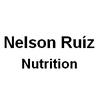Explore all the information on
Feed formulation
Welcome to the page about Feed formulation of Engormix; a source of knowledge on Feed formulation.
I. INTRODUCTION The continuous genetic improvements are increasing the first commercial egg size produced and extending the production life of the layer hens worldwide. These improvements are related to what happens at rearing and at the start of the production. Early studies showed that while approximately 60 to 75% of the calcium destined for the shell comes directly from intestinal absorption (Driggers and Comar, 1949), up to 36% could be traced to bones (Mueller et al., 1964)....
Comments : 0
Recommendations: 0
Zinc is an essential trace mineral in broiler nutrition. However, in commercial practice it is often fed above requirements to prevent any deficiencies. To prevent deficiencies, Zinc hydroxychloride (HTM) (IntelliBond®, Trouw Nutrition, Netherlands) provides versatility to optimise the producer’s trace mineral program and allow them to feed levels lower than those commercially used today in the form of sulfate trace minerals (STM). Raw data of nine studies was combined into...
Comments : 0
Recommendations: 0
.jpg&w=3840&q=75)

NARA's role in strengthening collaboration across the rendering industry
Suggested link
The formation of a viscous gut content in the small intestine due to the presence of non-starch polysaccharides in feed can markedly restrict efficient nutrient digestion in poultry. This adverse effect may be mediated through the supplementation of exogenous feed additives. The present study investigated the effects of carbohydrases and a buffered formic acid on growth performance and ileal digesta viscosity in broiler chickens fed a wheat- or maize diet. A 2 × 4 factorial arrangement...
Comments : 0
Recommendations: 1
Reduced protein (RP) diets have received increasing interest in poultry nutrition due to the potential benefits in feed cost and environmental footprint (Liu et al., 2021). Understanding the order of limiting amino acids (AA) in RP diets is critical to ensure requirements are met cost effectively. To date, only the first three limiting AA (including lysine [Lys], methionine [Met], and threonine [Thr]) have been demonstrated in RP layer diets, while the order of the next most limiting AA is...
Comments : 0
Recommendations: 0


Pre- Pelleting Process in Aquafeed Production Josef Barbi (E.S.E. & Intec)
Suggested link
Diego Martínez (University of Arkansas) An energy system is needed to optimize feed formulation and influence economics and sustainability. This study assessed the sensitivity of productive energy (PE) and classic net energy (CNE) to BW gain (BWG), feed conversion ratio (FCR), and net energy for gain (NEg) and maintenance (NEm), and developed models to predict BWG, FCR, and protein accretion (PAC). 1920 chicks in 96 pens were assigned to one...
Comments : 1
Recommendations: 0
Diego Martínez (University of Arkansas) explains how productive energy is a better predictor of performance, body weight gain, feed conversion and protein accretion, among other factors, in this Engormix interview during IPPE 2024 in Atlanta, USA....
Comments : 0
Recommendations: 1
.jpg&w=3840&q=75)

NARA's role in strengthening collaboration across the rendering industry
Suggested link
Mike Persia (Virginia Tech) Experiments were conducted to determine the bioavailability of fine ground aragonite (FGA) using 0-14 d old broilers and to determine the use of FGA on performance, eggshell quality, and tibia ash (TA) of laying hens from 28-56 wks. In experiment 1, 450 as hatched Ross 708 broilers were fed a basal diet without either LS or FGA containing 0.35% Ca and LS and FGA additions resulting in 0.43, 0.51, 0.59, and 0.67% Ca. Body...
Comments : 0
Recommendations: 0
Nelson Ruiz (Nelson Ruiz Nutrition LLC) explains how to deal with both cases and offers his insights and recommendations, in this Engormix interview during IPPE 2024 in Atlanta, USA....
Comments : 0
Recommendations: 0


Pre- Pelleting Process in Aquafeed Production Josef Barbi (E.S.E. & Intec)
Suggested link
Mike Persia (Virginia Tech) explains the characteristics of aragonite, how it is harvested, and its potential as a calcium source for poultry nutrition, in this Engormix interview during IPPE 2024 in Atlanta, USA....
Comments : 0
Recommendations: 0
Lara Moody (IFEEDER Executive Director) gives recommendations on important reductions and measurements to accomplish industry goals, in this Engormix interview during IPPE 2024 in Atlanta, USA....
Comments : 0
Recommendations: 0
.jpg&w=3840&q=75)

NARA's role in strengthening collaboration across the rendering industry
Suggested link
Álvaro Gordillo (BASF) explains his research presented at IPPE 2024 in Atlanta, USA, and comments on the bioavailability and microencapsulation of vitamins, during this Engormix interview....
Comments : 0
Recommendations: 1
I. INTRODUCTION Nutrient requirements are established by means of dose-response studies. Data is subjected to appropriate regression analysis and the level needed to maximise a given response (body weight gain, feed efficiency, carcass yield, etc.,) is defined as ‘requirement’. The estimates are compiled as ‘tables of nutrient requirement’ e.g., NRC, CVB, Brazilian Tables, nutrition guides by the genetic suppliers, and are used by field nutritionists as...
Comments : 2
Recommendations: 1


Pre- Pelleting Process in Aquafeed Production Josef Barbi (E.S.E. & Intec)
Suggested link
I. INTRODUCTION In Australia, the cost of tallow and vegetable oil has more than doubled over the past two years (www.finvis.com), prompting broiler nutritionists to re-evaluate dietary energy content for meat-type chickens. Globally, a wide range of lipids with diverse chemical composition, are routinely included in poultry feed including soapstocks or acid oil, crude vegetable oil, hydrogenated material, recycled vegetable oil, restaurant grease, animal tallows and even products...
Comments : 1
Recommendations: 3
I. INTRODUCTION Feeding the world’s projected burgeoning human population increase of 2.2 billion people by 2050 will place tremendous pressure on food security. The poultry industry is innovative and well positioned to address this problem through increased efficiency and waste reduction. Globally, 32% (by weight) of produced food − equivalent to 1.3 billion tons − is lost or wasted every year. Conversion of food waste into raw materials for production of poultry...
Comments : 0
Recommendations: 0
.jpg&w=3840&q=75)

NARA's role in strengthening collaboration across the rendering industry
Suggested link
I would like to know the safe percentage in using Saccharomyces cerevisiae for sheep feeding, as well as added impact on the revival of the rumen. ...
Comments : 2
Recommendations: 0
I. INTRODUCTION Broiler diets are formulated on the basis of ideal protein ratios (IPR) where selected amino acid requirements are expressed relative to lysine (100). However, IPR have been developed over decades for standard diets rather than diets with reduced-CP. This has led to the possibility that reduced-CP diets require modified IPR. For this reason, two sets of ratios were evaluated in diets with 210 and 180 g/kg CP in a 2 × 2 factorial design. II....
Comments : 3
Recommendations: 3


Pre- Pelleting Process in Aquafeed Production Josef Barbi (E.S.E. & Intec)
Suggested link
1-Monoglycerides of short and medium chain fatty acids (monobutyrin, monocaprin and monocaprylin) have shown positive effects on cell metabolism, intestinal integrity and immune system (Calder 2008). However, little is known about their effect on laying hen health, performance and egg quality. Therefore, this study was designed to add further insight into the applied benefits as well as optimal inclusion level of 1-monoglycerides of butyric, capric and caprylic acid on hen performance, their...
Comments : 0
Recommendations: 0
Basic Role of Feed Formulation Feed formulation is a process by which our knowledge of the nutrition of the animal can be translated into feeding programs which achieve our production objectives. These objectives typically include optimizing growth performance and producing a final carcass that can be converted into safe, healthy and appealing consumer meat products. This must be done in a profitable manner that concurrently contributes to environmental sustainability and animal...
Comments : 3
Recommendations: 3
.jpg&w=3840&q=75)

NARA's role in strengthening collaboration across the rendering industry
Suggested link
1. Introduction Extrusion has been widely used in feed processing for over 70 years [1]. It can change the physio-chemical properties of feed ingredients by applying constant moisture, pressure, and high temperature with the combination of shear force. Thus, extruded ingredients have greater nutrient utilization and reduced anti-nutritional factors [2]. Full-fat rice bran (FFRB), an important by-product of the rice milling industry, is commonly used as an alternative to...
Comments : 0
Recommendations: 0
The economic situation in the poultry market in Poland often forces farmers to consider which path they should follow. There are always several solutions to choose from. The common approaches include switching to another farming sector, reducing or suspending production, and, in extreme situations, even depopulating the flock. Yet I believe it is always worthwhile to ponder over the topic of optimization of costs and their re-calculation in respect of a particular flock. Farming is...
Comments : 0
Recommendations: 1






.jpg&w=3840&q=75)



.jpg&w=3840&q=75)














